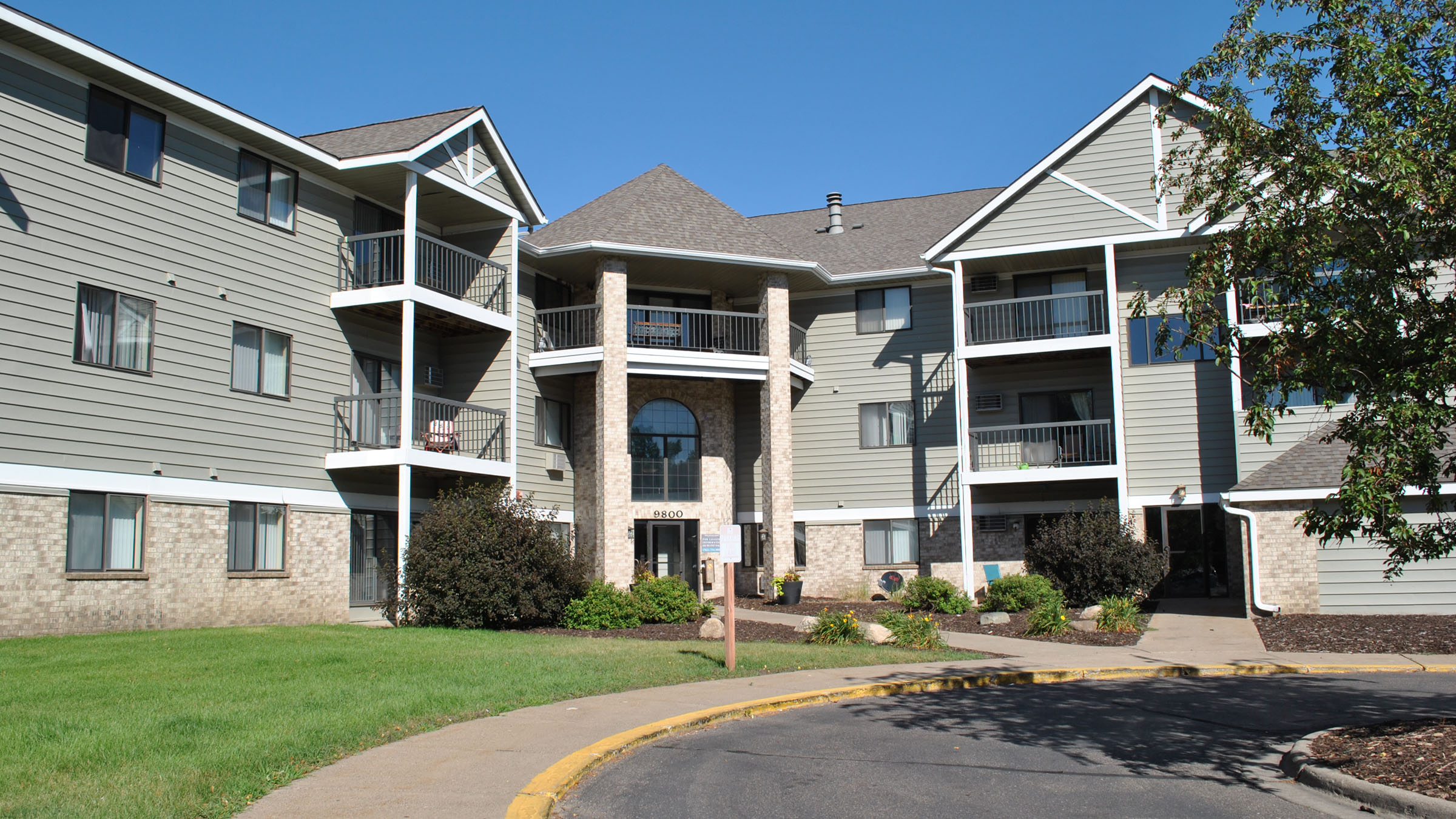A new data tool from the Federal Reserve Bank of Minneapolis enables users to explore trends in residential moves into, out of, and across the Twin Cities metropolitan area. Using credit data that track the same people over time at a precise geographic level, the Twin Cities Metro Migration Dashboard can show localized estimates of intra-metro mobility. The tool provides a new lens for anyone trying to understand how changes to the area’s housing market are influencing the ways people move within and between communities.
For example, in this article, we explore some of the ways the data underlying the dashboard may be used to further examine recent mobility trends. Specifically, analyses we conducted with the data suggest that residents of lower-income or less-White census tracts were more likely to move during the pandemic, and that residents of lower-income tracts were more likely to move to an area with relatively higher incomes.
Strengths and limitations
Data for the dashboard cover 2005 through 2023 and come from the FRBNY Consumer Credit Panel/Equifax (CCP), a representative sample of all people in the United States who have a Social Security Number and a credit file. To define the geographic area the dashboard covers, we use the U.S. Census Bureau’s definition of the Minneapolis-St. Paul-Bloomington metropolitan statistical area (MSA). This includes 14 counties in Minnesota and two in Wisconsin. The CCP data are not available to the public; the Federal Reserve has access to them through a data-sharing agreement with Equifax, one of the three major credit reporting agencies in the United States.
The dashboard’s strength lies in its ability to show migration trends at a more localized level—and with more recency—than data resources that are publicly available. For example, the Minnesota State Demographer, the U.S. Census Bureau, the Internal Revenue Service, and the Metropolitan Council (a regional government body for the Twin Cities area) all offer useful resources on migration and population trends, but their data feature less geographic detail and have longer data-lag times.
There are important limitations with the CCP data, however. Because the data capture people’s locations at a census-tract level, we can’t see moves within tracts. And compared to the general population, the sample underrepresents non-citizens, people under age 25, Black or Latino/a people, and people with low incomes. Members of these groups are less likely to have a credit score. (For more on these limitations, see the “About the data” section of the dashboard page.)
Further analysis shows migration trends before and during the pandemic period
To dig deeper into the data, we separated the MSA’s residents into four bands by credit score. Credit score is not a perfect proxy for income, but the two are correlated; while income is not a variable in the formula that determines someone’s credit score, people with higher incomes tend to have higher credit scores.
Figure 1 presents migration rates by credit score bands for time periods that track with the Great Recession (2005–2011), the post-Great Recession employment recovery (2012–2015) and stabilization (2016–2019), and the period that started with the COVID-19 stay-at-home orders of 2020 (2020–2023). As we look across these periods, we see that movement rates of the four credit score bands differ from one another, and also changed in different ways over time.
Throughout each period, people with credit scores of 750 and above remained the least likely to move. During the pandemic period, the gap in migration rates between people with the highest credit scores and people with the lowest shrank considerably. Higher-credit-score people’s migration rate was stable compared to the rate in prior periods, while lower-credit-score people’s migration rate decreased substantially.
For example, during the lead-up to and thick of the Great Recession, MSA residents with the highest credit scores were the group most likely to have stayed within one census tract. As Figure 1 shows, about a quarter of the people with the highest credit scores moved outside their original census tract during this time period, 2005–2011. People with the lowest credit scores were more than twice as likely to move.
Figure 1 enables the reader to compare the three years prior to the pandemic period with the three years of available information from the pandemic period. It presents movement rates within and across multiple geographies: census tracts, which are relatively small geographic units typically consisting of several thousand people; the “seven core counties” of the MSA, or Anoka, Carver, Dakota, Hennepin, Ramsey, Scott, and Washington counties; and the “broader metro area,” or the remaining nine counties of the MSA.
Our data allow us to estimate that 7.6 percent of the MSA’s people with a credit score left the region from 2020 to 2023, compared to 7.3 percent from 2016 to 2019. Larger shares of residents moved out of their census tract but in most cases stayed within the MSA.
During the same time period, the number of people with a credit score moving from the MSA’s two central cities increased slightly. About 19 percent of the people living in Minneapolis in 2016 had moved to a suburb or left the MSA by 2019. From 2020 to 2023, about 21 percent of Minneapolitans did the same. The equivalent numbers for St. Paul were 17 and 18 percent for each time period, respectively.
To get a better sense of pandemic-era migration patterns, we also cross-referenced the CCP data with neighborhood-level data on income and race from the U.S. Census Bureau. Tracts with lower shares of White people generally saw more movement from 2020 to 2023. For example, there are 106 census tracts in the MSA that have a greater share of people of color than White people. In these tracts—shown on the left side of Figure 2—the median migration rate was 36 percent from 2020 through 2023. In White-majority tracts—shown on the right side of Figure 2—the median migration rate was 25 percent.
A related pattern is visible in Figure 3, which shows that places with relatively low median household incomes tend to have substantially higher out-migration rates than places with relatively high median household incomes.
Of course, other neighborhood characteristics are bound up in these relationships, and we do not disentangle those overlapping associations here. For example, homeowners are generally less likely to move when there’s a major shock in the economy—like the one the world experienced during the COVID-19 pandemic. And homeownership tends to be higher in high-income and White-majority tracts. The gaps between these types of tracts are still notable in comparison to the gap in migration rates between mortgagors and non-mortgagors overall, which ranged from 3.4 percentage points to 4 percentage points during each year in this time period.
We also examined the types of census tracts people moved from and to during the pandemic era. As Figure 4 shows, more than three-quarters of the movers from low-income tracts moved to tracts in higher-income categories, and nearly half of the movers from moderate-income tracts moved to middle- or high-income tracts. Overall, one-third of the people who moved from 2020 through 2023 landed in a census tract within a higher income bracket than the one they started in.*
Digging in to understand regional and neighborhood change
Ultimately, the data underlying our new dashboard can’t tell us why people moved. People move in search of cheaper rents, to buy a home, to enroll in a different school district, to be closer to family and friends, and for all sorts of other reasons.
The data do tell us that neighborhoods are changing in different ways. Neighborhoods where incomes are higher, and where more residents are White, see less migration.
Researchers at the Minneapolis Fed will continue to dig into this data source to better understand the ways people are moving throughout the region. For example, we plan to examine how the relationship among housing construction, rent levels, and other factors affects the movement of people throughout the MSA. This work will inform our continued efforts to understand the housing sector in our region. Studying migration will ultimately give us more insights into the ways market conditions, regulations, and other ingredients influence low- and moderate-income households’ ability to access housing affordability. In the meantime, we hope the tool is useful for anyone interested in how their community within the Twin Cities area has changed over the past two decades.
Endnote
* For this calculation, we use income brackets defined by the Community Reinvestment Act. High-income census tracts are those with a median household income above 120 percent of the MSA’s area median income (AMI), middle-income tracts are those with median household incomes at 80 to 120 percent of AMI, moderate-income tracts are those with median household incomes at 50 to 80 percent of AMI, and low-income tracts are those with median household incomes below 50 percent of AMI. These figures do not reflect population changes within census tracts by income or race. Most tracts in the region fall into the moderate- or middle-income categories, at shares of 40 percent and 37 percent, respectively. High- and low-income tracts each make up about 11 percent of the remainder.








